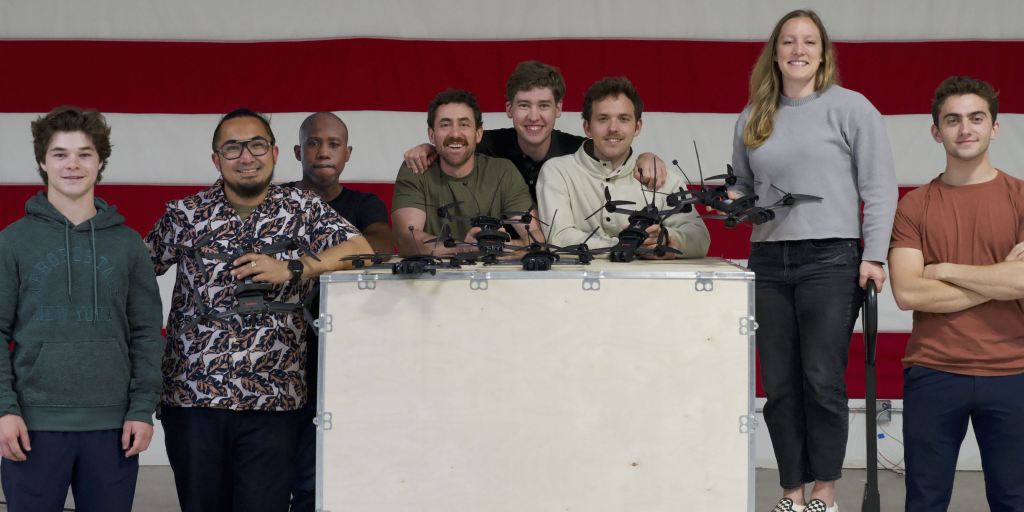Partnering with Neros: Next-Gen Drones, Made in America
Soren and Olaf started out as teenage drone racers. Now, they’re building machines to keep the United States and allies safe.

When Soren Monroe-Anderson and Olaf Hichwa first met, they were competitors with a lot in common. Both were first-person view drone pilots racing at the professional level, both ran their own businesses designing and selling drone components—and both were still in high school.
Soren grew up racing in Alaska before moving to New England, where his parents took jobs at Dartmouth, while Olaf built his skills near Washington, D.C., where he was part of the extended Sequoia family—his father spent his career as a leader at Oracle, a legendary part of our portfolio. By the time he was 17, Soren was a world champion in the MultiGP drone racing league; Olaf, meanwhile, had ranked third on the league’s global leaderboard a few years earlier and went on to design and sell thousands of drone circuit boards to the world’s top pilots.
MultiGP is like the Formula 1 of the drone world—to succeed at Soren’s and Olaf’s level requires elite skills in not just piloting but engineering. And now, these competitors turned co-founders are using that dual expertise to build the drones that they always wanted—and that they know soldiers need.
When I was in Afghanistan in 2012, the U.S. military was using what were then called drones—but they were large, fixed-wing devices that had more in common with airplanes than with the drones of today. Advances in technology in the decade since are on par with the jump between World War II and Vietnam; for the past two years, Ukraine’s military has defended against the Russia invasion not just with planes, ships and tanks but also electromagnetic energy, Starlink, hypersonic weapons—and modern, quadcopter drones.
Drones are a foundational technology for the future of warfare, with use cases going far beyond offensive missions; they are also used, in massive quantities, to gather intelligence, clear mines and more. But the U.S. is currently far behind in production of both these machines and their components, with 85% of global drone manufacturing capacity owned by China. Under the Department of Defense’s Replicator initiative, large U.S. defense companies will produce thousands of drones, but Ukraine will use an estimated 2.5 million this year alone.
With Neros, Soren and Olaf are determined to change that math.
Last year, a few days after we first met, Soren traveled to the front lines of Ukraine—to share what he knew about flying drones, and to see firsthand what the soldiers there needed. He came back with a clear vision for what Neros should build, and for how they should build it: a new generation of drones, from a fully American supply chain. We partnered soon after.
And then we saw just how quickly Soren, Olaf and their team work. They began in earnest in June, and by September, Neros—still a pre-seed company at the time—had successfully tested and deployed functional drones in Ukraine. Today, those drones remain a critical tool on the battlefield, and Neros recently completed an exercise with the U.S. Army, successfully removing anti-tank landmines in every attempt.
It’s an incredibly impressive track record for any new company, much less one led by co-founders who are barely in their 20s. But once you know Soren and Olaf, it’s difficult to be surprised. They are amazing: laser-focused on understanding their customers and iterating quickly to meet soldiers’ needs, and they are bringing on top talent to help them scale. With this round of seed funding, Neros will continue building that team, and will open a new 15,500-square-foot factory, enabling them to produce thousands of drones each month. From there, Soren and Olaf plan to bring production of more components in house—continuing progress toward their dream of a fully American drone supply chain—and eventually, to expand beyond drones to more aspects of defense, reshoring manufacturing as they go.
Less than a decade after they faced off as racers, these two teenage competitors turned friends and their team are already making a life-saving difference for soldiers in Ukraine—and soon, for the men and women who serve in the U.S. military and all around the world.


